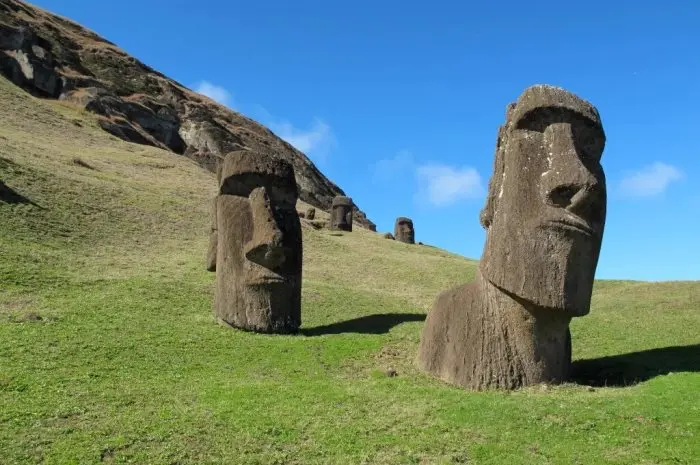Moai Island, often synonymous with the iconic and enigmatic Moai statues, is an intriguing destination that enthralls visitors from around the globe. Officially known as Easter Island, a territory of Chile, this remote island in the southeastern Pacific Ocean is steeped in mystery and rich history.
From its colossal stone figures to its isolated location, Moai Island, or Rapa Nui, as it is known locally, invites travelers to explore its ancient culture and enigmatic past. This article delves into the many wonders of Moai Island, making it a must-visit for history buffs and adventure seekers alike.
1. The Mystery of the Moai Statues
The most striking feature of Pulau Moai is undoubtedly the Moai statues, which have puzzled historians and archaeologists for centuries. These towering figures, carved from volcanic rock, are believed to represent the ancestors of the Rapa Nui people.
The statues vary in size, with some reaching up to 10 meters in height. How the Rapa Nui people transported these massive structures across the island remains one of the world’s greatest unsolved mysteries.
2. A Glimpse into Rapa Nui Culture
Moai Island offers more than just its famous statues. It provides a window into the unique culture of the Rapa Nui people. Despite its small size, the island is rich in cultural heritage, with petroglyphs, traditional dance and music, and ancient ceremonial sites like Orongo, where the birdman competition took place.
These cultural elements offer insight into the island’s complex history and the ingenuity of its inhabitants.
3. Natural Wonders and Outdoor Adventures
Aside from its historical and cultural significance, Moai Island is also home to breathtaking natural landscapes. The island’s volcanic origins have created a varied terrain of rolling hills, extinct volcanoes, and rugged coastlines.
Visitors can enjoy hiking, horseback riding, and exploring the island’s natural beauty, including its beautiful beaches and the impressive Rano Kau crater.
4. A Lesson in Sustainability and Preservation
The history of Moai Island is also a cautionary tale about environmental sustainability. Historical evidence suggests that the island’s ecosystem collapsed due to deforestation and overexploitation of resources, leading to societal decline.
Today, efforts are focused on preserving the island’s natural and cultural heritage, making it a model for sustainable tourism and conservation.
5. Remote Yet Accessible
Despite its remote location, Moai Island is more accessible than many might think. Regular flights connect it to mainland Chile and other South Pacific islands, making it a feasible destination for intrepid travelers. Once on the island, visitors will find a range of accommodations and amenities to make their stay comfortable.
6. An Island with Similar Characteristics to Moai Island
Socotra Island and Moai Island (Easter Island) are both remote islands known for their unique and endemic biodiversity. Pulau Socotra, with its surreal Dragon’s Blood Trees, and Moai, famous for its enigmatic statues, both possess distinct landscapes that have evolved in isolation.
They share a sense of mystery and are recognized for their significant cultural and natural importance on a global scale.
Conclusion
Moai Island, with its mysterious statues, rich cultural heritage, stunning natural landscapes, and lessons in sustainability, is a unique and fascinating destination. It offers an unparalleled opportunity to step back in time and explore one of the world’s most intriguing cultures. For anyone looking for an off-the-beaten-path adventure that combines history, nature, and mystery, Moai Island is a destination that should not be missed.




